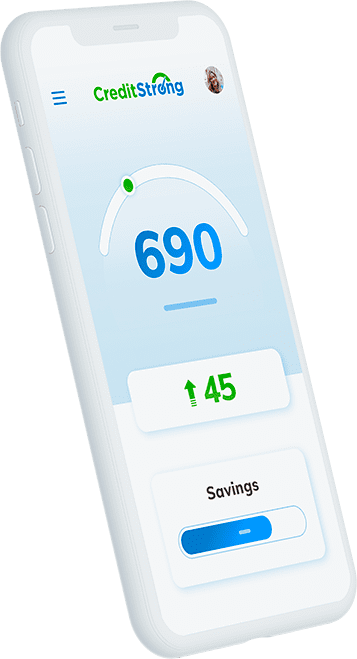Credit Line Hybrid: What Is It and Is It a Good Fit for Your Business?

Build strong business credit
with your EIN

Securing financing for your company may be one of your most important concerns as a small business owner. There are actions you can take to improve your business’s odds of qualifying for financing. Establishing good business credit can be a wise place to start. With good business credit, you may be able to qualify for a small business loan, unsecured business line of credit, and more.
However, even before you build solid business credit scores, there may be some financing options available to you. A credit line hybrid is one such example. This non-traditional funding strategy relies on the strength of your personal credit scores, but it can potentially be risky.
Read on to learn how credit line hybrids work along with the benefits and drawbacks you should consider before you decide whether to seek out this type of business financing.
What Is a Credit Line Hybrid?
A credit line hybrid is a combination of multiple revolving accounts like credit cards and (sometimes) lines of credit, instead of a single source of financing. Business financing brokers may use the term “credit line hybrid” to describe a process also called credit card stacking.
You can apply for multiple business credit cards on your own and use them to help finance different areas of your business. What makes a credit line hybrid different from this traditional approach is that it involves authorizing a third party to apply for credit on your behalf.
How Does a Credit Line Hybrid Work?
The goal of a credit line hybrid program is to help you access a large amount of business credit in a shorter period of time. You might come across credit line hybrid programs that advertise potential results such as the following:
- High Credit Limits (Up to $150,000 and Above)
- No Collateral Requirements
- APRs as Low as 0%
- Startups Eligible for Funding
- No-Doc Financing
- Zero closing costs
In practice, getting a credit line hybrid does not involve a single application for financing. It might involve more than a dozen.
Every company is a bit different. But here’s how the credit line hybrid process often works.
- Step One: A third party broker (aka the credit card stacking company) reviews your personal credit report and score. The company may also review your business credit score, if you have one, to see what types of accounts you might be eligible to open.
- Step Two: The broker submits multiple credit applications on your behalf for credit cards and sometimes business lines of credit based on your credit profile. These applications may include business credit cards, personal credit cards, and more.
- Step Three: Once you qualify for multiple credit cards, the credit card stacking company teaches you how to use the accounts together as if they were a business line of credit.
There may be some benefits to using the credit line hybrid strategy for your business. For example, if the broker does a good job and helps you open accounts with 0% promotional APRs, you might be able to access low-cost funding temporarily.
Additionally, if you open multiple business credit cards and pay them on time, those accounts could possibly help you build business credit. Yet there are significant potential downsides to the credit line hybrid strategy that are important to understand as well.
Credit Card Stacking Pitfalls
Before you decide to try credit card stacking, it’s important to understand the risks associated with this business financing strategy. Below are five problems you could face if credit card stacking goes wrong.
Potential Credit Damage
Well-managed credit cards have the potential to improve your credit scores. Yet there are several ways that credit card stacking might hurt your credit instead — both personal and business.
First, if a broker applies for multiple credit cards in your name (business or personal credit cards), the credit card companies will likely check your personal credit report and score with each application. These hard inquiries can damage your credit score.
Some credit cards in your credit line hybrid might show up on your personal credit reports (even if they’re business credit cards). If they do and then the credit utilization rate climbs high on those accounts, your personal credit scores could decline.

Broker Fees
Credit card stacking companies charge fees for their services. These fees could be as high as 10% of the amount of credit for which the broker “helps” you get approved (by facilitating the application process).
For example, if you’re approved for 10 credit cards and each has a $10,000 credit limit. Your total “credit line hybrid” credit limit would be $100,000. At a 10% fee, the broker could charge you $10,000 for submitting those applications on your behalf.
High Cash Advance Fees
When you open a credit card, you can often access a portion of your credit line in cash. This process is called a cash advance. However, credit card cash advances can be an expensive way to borrow money.
First, your credit card issuer may charge you a cash advance fee. (Note: Some credit unions offer lower fees for cash advances.) You might also have to pay a higher APR on cash advances than you do for regular purchases on the account.
Personal Guarantee
Most business credit cards require a personal guarantee when you open an account. If your business borrows money using a credit line hybrid strategy and can’t pay it back, you could be personally on the hook for the debt.
Even if a business credit card doesn’t show up on your consumer credit reports, the situation might change if your business falls behind. Many business credit card issuers reserve the right to report late payments and default to the consumer credit bureaus.
Interest Charges
If you have good personal credit you might qualify for attractive credit cards with 0% introductory APR offers. However, once these promotional periods expire (or if you can’t qualify for them in the first place) interest rates may soar.
Credit cards are notorious for being an expensive way to borrow money. So unless you can commit to paying off your full credit card balance each month on every account, you may be better off searching for more affordable financing options.
Is a Credit Line Hybrid Right for You?
A credit line hybrid represents an out-of-the-box funding solution for small business owners who might be struggling to qualify for traditional business financing. Yet this method of financing has some significant risks that can offset the benefits it may offer.
If your goal is to build business credit without using personal credit, a credit line hybrid won’t make sense for you. Instead, you may want to focus on taking the time to establish business credit in a more traditional way. Resources like CreditStrong may help.
Working to build a good business credit rating can be a slow process. But the hard work may be worth it in the long run if you succeed and are able to put your business in a better position to qualify for competitive business financing solutions.
CreditStrong for Business is the only 0% interest business credit builder in the nation
